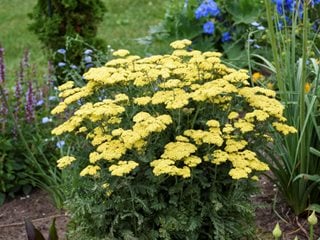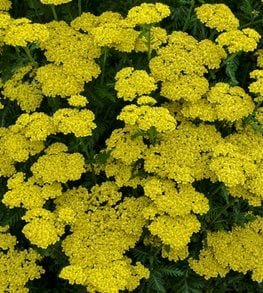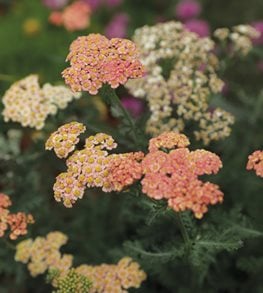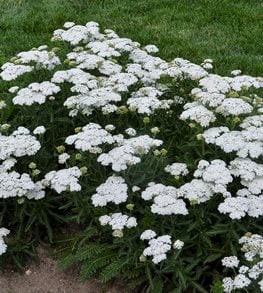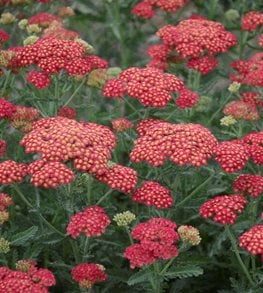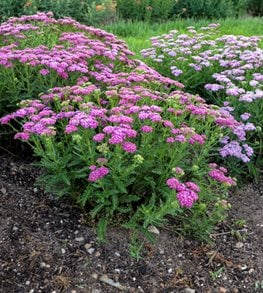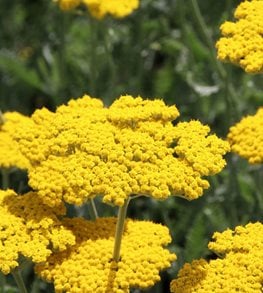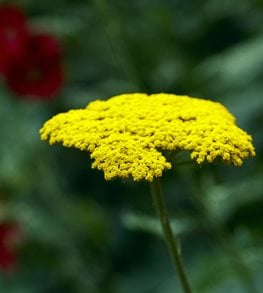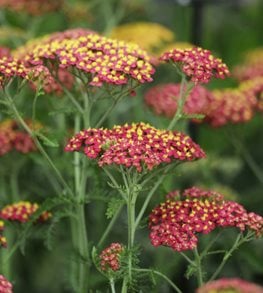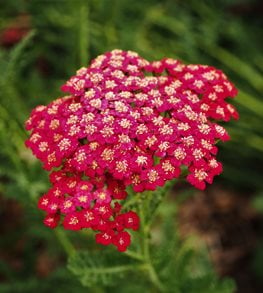9 Best Yarrow Plants for Heating up the Summer Garden
Tough and adaptable, these carefree bloomers will fill your garden with color all season longIf a garden perennial could have a theme song, yarrow’s would be “I Will Survive.” It grows strong and has learned how to get along in even the toughest situations including drought, infertile soils, and sweltering heat. No one would guess that such a delicate-looking flower could be so resilient.
“Achillea (yarrow) is one of the perennials that can rescue a barren, dry area and cover it with bloom,” say Jeff and Marilyn Cox, authors of The Perennial Garden: Color Harmonies through the Seasons.
The same common white yarrow (A. millefolium) found flourishing in meadows and prairies has made its way into the perennial garden in recent years with the introduction of new cultivars and hybrids that offer a broader array of colors and forms while retaining yarrow’s gutsy nature. With selections ranging from low-growing ground covers to loftier plants for the middle or back of the border, there is a garden yarrow for almost any purpose.
On this page: Basics | Planting | Care | Pictures | FAQs | Design Ideas
On this page:
- BASICS
- PLANTING YARROW
- YARROW CARE AND MAINTENANCE
- YARROW VARIETIES
- FREQUENTLY ASKED QUESTIONS
- DESIGN IDEAS
YARROW BASICS
Botanical name:
Achillea spp. and hybrids
Plant type:
Herbaceous perennial
Zones:
Typically zones 3-9, but can vary depending on the cultivar.
Exposure:
Full sun
Height:
Varies by species, ranging anywhere from 8 inches to 5 feet tall
Bloom time:
Early summer to early fall, depending on the climate. In warmer growing zones, flowering begins earlier; in cooler zones it often continues into fall.
Flowers:
Yarrow produces an abundance of broad, flat-topped flower clusters (or corymbs) made up of dozens of tiny daisy-like florets. Yarrow flower colors range from white and soft pastels to brilliant shades of yellow, red, orange, and gold. Some cultivars, such as ‘Red Velvet’, have flowers with contrasting center stamens.
Foliage:
The feathery foliage is also attractive, with finely divided gray or green leaves that remain evergreen in warmer climates. Leaves are aromatic, releasing a pleasant herbal scent when crushed.
Are yarrow plants deer resistant?
Yarrow aren't bothered by deer or rabbits.
"“It just puts on blooms all season long... the wonderful thing about it is that as the blooms age, they turn a creamier yellow and look beautiful dried—so you don’t feel like you need to deadhead this plant ever.” — Laura, Garden Answer
PLANTING YARROW
Planting:
Sow seeds or plant nursery-grown plants in fall (well before the first average frost date) or in early spring after the danger of frost has passed. Most yarrows grown from seed will be inconsistent in height and flower color. If you want a specific color, height or form, buy potted plants.
Soil:
Although yarrow will grow well in just about any type of soil, taller types tend to flop in soils that are rich or overly moist. They are at their best growing in slightly acidic, well-drained soil. “If you have trouble growing yarrow, it’s most likely because your soil is too wet. Plant it on high, dry spots,” recommend Jeff and Marilyn Cox.
In containers:
Compact yarrow varieties thrive in pots with full sun and well-draining soil. Use a gritty potting mix and a container with good drainage.
YARROW CARE AND MAINTENANCE
Water and fertilizer:
Yarrow is one perennial that actually thrives on neglect, and your plants will suffer if you overwater or overfertilize them. Keep the soil evenly moist until the roots become established, but after that only water your plants when the soil is completely dry. Fertilization is rarely needed, and overfertilization can lead to leggy growth.
Dividing:
Yarrow spreads quickly by rhizomes. Divide every 2 to 3 years in spring or fall to avoid overcrowding and to reinvigorate plants that begin to look matted and untidy. (Learn how to divide perennial plants.)
"Yarrow clumps tend to die out in the center after a few years and are best divided regularly to maintain their vigor." — AHS Essential Guide to Perennial Gardening
Pruning:
Deadheading yarrow will encourage repeat blooming and often prolong flowering into fall. If your plants become too tall and lanky, shearing back the foliage will make them bushier and often eliminate the need for staking. To reduce disease problems, thin out plants that become overcrowded and cut out any dead growth.
Staking:
Taller varieties may require staking.
Winter care:
In colder zones, yarrow dies back to the ground in fall. After a hard frost, cut back dead foliage. A light mulch after the ground freezes can help protect roots from freeze-thaw cycles. In warmer regions, the foliage may stay semi-evergreen.
Pests and diseases:
Yarrow generally has few disease and pest problems, but can be prone to powdery mildew and stem rot if planted in shady or wet sites. Yarrow may also be troubled by botrytis (gray mold). Also, keep an eye out for aphids, mealybugs, and spittlebugs.
YARROW PICTURES
FREQUENTLY ASKED QUESTIONS
Does yarrow come back every year?
Yes, yarrow is a hardy perennial that comes back every year. In most climates, it dies back in winter and reemerges in spring, often spreading slightly each season.
How invasive is yarrow?
Yarrow can be mildly invasive in some conditions. It spreads by rhizomes and can form dense mats, especially in loose or sandy soil. Regular dividing and trimming help keep it in check. Opt for sterile or clumping varieties if spread is a concern.
What are the traditional medicinal uses of yarrow?
Yes, yarrow has a long history of medicinal use. Traditionally, it’s been used to help stop bleeding, reduce inflammation, and support digestion. While still valued in herbal medicine today, it’s best to consult a healthcare provider before using yarrow medicinally.
DESIGN IDEAS
- Use low-growing forms of yarrow as a soft-looking evergreen edging or even as an alternative to turf grass in dry climates. Because yarrow spreads by rhizomes, it will quickly form dense mats of water-thrifty foliage. Read more about alternative lawn plants.
- Varieties with silver foliage and pale flowers, such as ‘Moonshine’, are great additions to evening gardens, alongside other plants with shimmery light-reflective foliage.
- Use yarrows with rich yellow or gold tones, such as 'Firefly Sunshine', or ‘Coronation Gold’, as a warm contrast to blue, purple or violet perennials, such as speedwell (Veronica spicata), Geranium ‘Johnson’s Blue’ and salvias (see Color in the Garden).
- Plant yarrow in pollinator gardens along with other perennials that attract bees and butterflies, such as butterfly weed and bee balm.
- Because of their drought tolerance, yarrows are an ideal choice for low-water or xeriscape gardens.
- Yarrows with compact growth habits and eye-catching colors, such as ‘Paprika’ and ‘Peachy Seduction’, make splendid “thriller” plants in outdoor container combinations. The large, flat-topped blooms look like colorful sun parasols while the feathery foliage adds great texture.
- To enjoy yarrow in dried flower arrangements, tie fresh-cut bunches into bundles and hang them upside down by the stems in a cool, dry place. The dried flower heads will retain their color for months.
ABOUT THE AUTHOR
Anne Balogh is a longtime home gardener and writer for GardenDesign.com, sharing insights from over 30 years of hands-on experience in her northern Illinois backyard. She believes the best gardens—and gardeners—are shaped by patience, persistence, and a love of learning by doing.
RELATED:
16 Surprisingly Drought-Tolerant Plants
12 Flowering Plants for the Summer Garden
